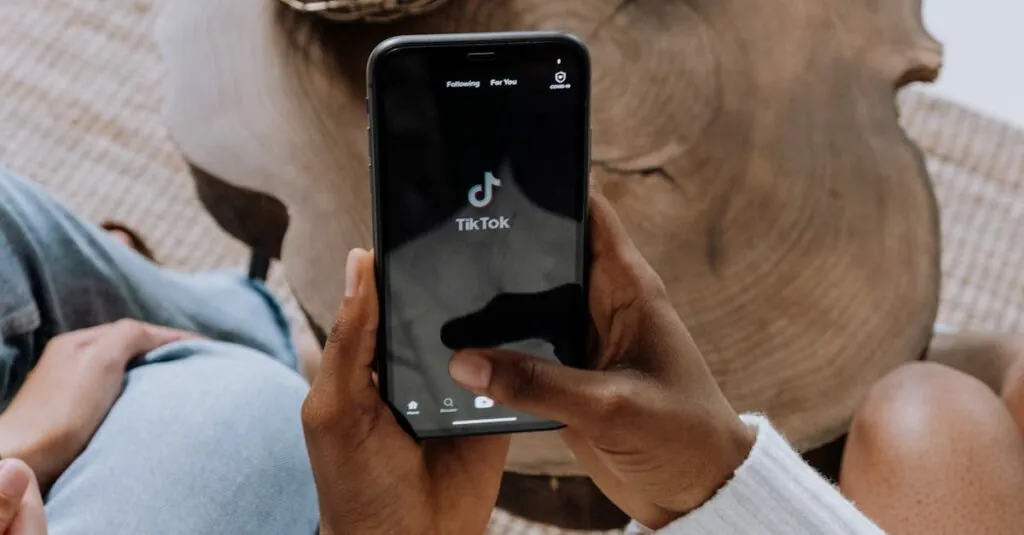Table of Contents
ToggleEver tried to kick an app off your iPhone, only to find it clinging on like a toddler refusing to leave a playground? It’s frustrating, isn’t it? Whether it’s that game you swore you’d play or the social media app that turned into a black hole of time, sometimes it’s just time to say goodbye.
Understanding App Removal on iPhone
Deleting apps on an iPhone isn’t just a quick fix for clutter; it serves several essential functions for device management. A thorough approach to app removal enhances device performance, conserves storage space, and can even improve battery life.
Importance of Fully Removing Apps
Fully removing apps ensures that unnecessary data is cleared from the device. Residual files can linger even after an app appears deleted. A complete removal process eliminates background processes that may drain resources and optimize overall performance. Additionally, uninstalling apps frees up valuable storage, allowing users to install new apps or store more media. Prioritizing a clean slate on the device also helps maintain organization and simplifies navigation.
Common Reasons for App Removal
Users commonly decide to remove apps for various reasons. Lack of use often leads to uninstallation, as many apps become redundant over time. Another reason involves performance issues; particularly resource-heavy apps can slow down devices significantly. Users may also wish to declutter their home screens, creating a more streamlined interface without unnecessary distractions. Changes in interests or functionality make certain apps obsolete, prompting users to bid farewell to them.
Quick Methods to Remove Apps
Several straightforward methods exist for removing apps from an iPhone. Users can effectively delete unwanted apps using either the Home Screen or the Settings app.
Removing Apps Using the Home Screen
Accessing the Home Screen provides a quick way to delete apps. Press and hold the app icon until a menu appears. Select “Remove App” from the options. Tapping “Delete App” allows for complete removal, ensuring no residual data remains. Moving apps to the trash icon removes them from the device entirely. Users can swiftly clean up their home screens and improve device performance.
Removing Apps Through Settings
The Settings app offers an alternative route for app removal. Open Settings and navigate to “General.” Selecting “iPhone Storage” displays a list of installed apps along with their storage usage. Tapping on an app reveals more details and an option to “Delete App.” This method supports users in managing storage effectively by targeting unused applications. Users can also review app data before deletion, ensuring a clean removal process while reclaiming valuable space.
Advanced Techniques for Complete Removal
For those looking to ensure a definitive app removal from an iPhone, advanced techniques can help eliminate lingering data and account connections.
Deleting App Data and Cache
Deleting an app does not automatically clear all associated data. Users can take additional steps to remove app data and cache. First, navigate to “Settings,” then select “General” and tap on “iPhone Storage.” Locating the specific app allows them to access storage insights. Users can then view the data size and delete any residual files manually if deleting the app alone does not suffice. Clearing data reclaim storage and may enhance device performance by preventing unnecessary cache retention.
Unlinking or Deactivating Accounts
Unlinking accounts associated with the app also ensures a thorough removal. Before deleting, users can open the app to find account settings. Typically, they may find options to unlink or deactivate accounts under profile or security settings. Completing this step prevents data retention on external servers and ensures user privacy. It’s important to remember that some apps may store personal data even after deletion, so unlinking accounts is crucial for complete removal. After this, users can proceed to delete the app, providing peace of mind.
Troubleshooting Common Issues
Users occasionally encounter problems when attempting to delete apps from their iPhones. Addressing these issues can lead to a complete removal of unwanted applications.
When Apps Won’t Delete
Apps sometimes refuse to delete due to restrictions set on the device or unexpected glitches. Checking if restrictions are enabled can resolve this problem; users can do this by navigating to “Settings,” selecting “Screen Time,” and examining any restrictions on app deletions. Force closing the app, or even restarting the iPhone, may restore functionality if glitches persist. If nothing works, users can also try updating their iOS version to fix underlying software issues. Keeping the device updated often prevents further problems with app management.
Resolving Data Retention Problems
App data retention occurs when an app is deleted but leaves behind residual files. Users seeking full data removal should access “Settings,” then “General,” followed by “iPhone Storage.” Reviewing installed apps reveals both storage usage and any remaining app data. To clear residuals, tapping on the app and selecting “Delete App” ensures complete disposal of app content. Additionally, users should consider signing out of associated accounts before deletion to enhance privacy. Following these steps guarantees that unneeded data is thoroughly eliminated from the device.
Removing apps from an iPhone can significantly enhance its performance and free up valuable storage space. By following the outlined methods and advanced techniques users can ensure a thorough removal process that eliminates residual data and background processes. This not only declutters the device but also contributes to better battery life and overall efficiency.
Addressing common issues and understanding the importance of unlinking accounts further safeguards user privacy. With a few simple steps it’s possible to reclaim control over the device and create a streamlined experience. Embracing these practices will help users maintain an optimized iPhone that meets their needs.





